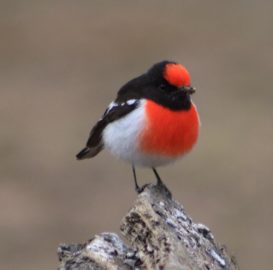Commonly called Japanese Raisin Tree or Kenpo Nashi Hovenia dulcis is a native of China, Korea, Japan and the Himalayas.

Growing Conditions
Spacing 4 m between trees, this tree initially will require staking for the first couple of years. It can be grown in a container for a few years and enjoys full sun to induce flowering, improve flowering and improve ripening of the fruit. Provide protection for the first few years from wind and frost. It is tolerant of a wide range of soil types but prefers fertile moist loam. The tree itself is not particularly nutrient hungry but an annual application of organic fertiliser in spring is worthwhile. I have mine planted along with support species of cowpea and tagaste and it is doing well in its first season. Good drainage is a must though. Growing to 6-9m high with a canopy spread of 4m makes it a good shade tree even if you don’t harvest the fruit. Its heart shaped leaves and white flowers make a nice specimen tree. Best suited to temperate or subtropical climates it is very cold hardy once established.
Uses
The edible part of this tree is somewhat unusual though. After flowering the plant sets thickened stalks with green seed pods. The pods are not edible and contain 2-3 seeds for propagating should you decide to give it a go. Stalks are hand picked and pods removed. These stalks are then dried on a tray in the sun or the dehydrator. Have a look at the video below.
Recent Medicinal research suggests that this fruit may assist in reducing blood sugar levels. In chinese medicine the fruit is used to make a drink to help relieve hangovers. This is due to a compound called Dihydromyricetin which is responsible for not only reduction of the symptoms of hangover but also for reducing the impact of alcohol on the liver. In fact a recent study into a variety of compounds found in both the edible and non edible parts of the plant concluded it useful for a range of conditions from allergies to constipation and even inflammatory pain. It is currently being studied by many pharmaceutical companies for inclusion in a variety of drugs in European countries.
So go ahead and brew yourself some hot tea using the flower stems after they have been dried, you might just find it useful for a range of ailments. Be sure to check with your physician before hand to be sure there are no interactions with any medications or issues you currently have.
Bees are attracted to the flowers and gain a good amount of nectar from them. The swollen stalks will fall to the ground if you don’t hand pick them making it easy to pick them up for storage. They store well in a paper bag in cool dry environment such as a cupboard. Fruiting is generally between April and June making them a perfect autumn or winter snack.
The wood of the raisin tree is also useful for building projects, wood turning and making handles for garden tools and the like.
As always I encourage you to know your garden well and choose appropriate plantings to suit your climate and conditions. This tree being deciduous will produce copious amounts of leave matter in the autumn/winter which is ideal for use as mulch or added to the compost. Alternatively leave the fallen material right where it is and protect your soil around the plant. It can be pruned lightly to induce required shape or left alone it will form a large shrub.
If you enjoyed this article, you will find others in the Uncommon Fruits & Vege Series on our website. Go on grow something different. You will be the talk of the neighbourhood.



